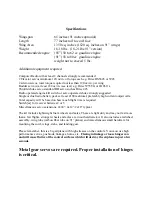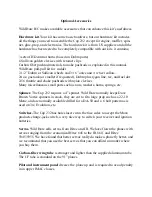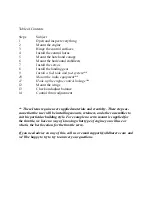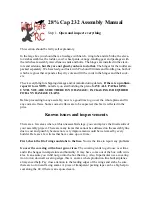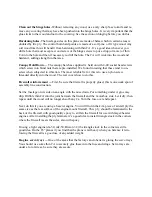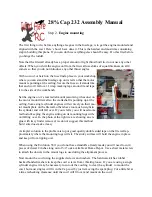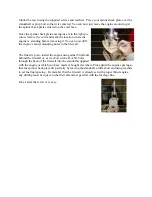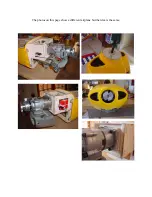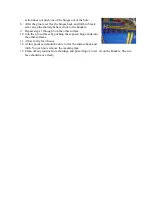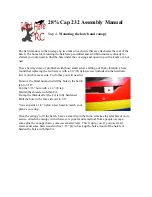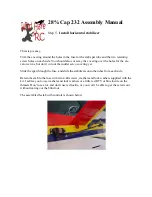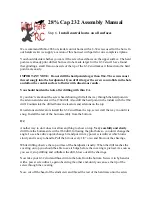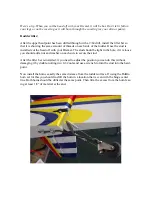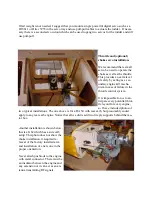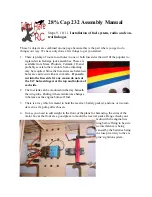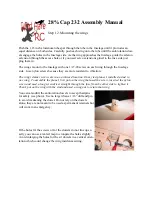
Clean out the hinge holes.
Without removing any wood, use a very sharp X-acto knife and re-
move any covering that may have been pushed into the hinge holes. It is very important that the
glue sticks to the wood and not to the covering. See the section on hinging before you do this.
Hardening holes.
The fuselage sides on this plane are made of balsa which in certain areas is
doubled by lite ply. The control horn hard points are made of a soft pine or fir type wood. Any
soft wood like this will benefit from hardening with thin CA. It’s a good idea whenever you
drill a hole that must accept a wood screw or the hinge screws to put a drop (or more) of thin
CA into the hole and then if necessary re-drill the hole. The CA will wick into the wood and
harden it, adding strength in that area.
Canopy Hold Down —
The canopy hatch as supplied is held on with 4-40 socket head screws
which screw into blind nuts that are pre-installed. We found in testing that these tend to un-
screw when subjected to vibration. The most reliable fix for this is to use a nylon screw
threaded directly into the wood. The text covers how to do this.
Firewall reinforcement —
First, be sure the firewall is properly glued, this is one weak spot of
assembly line construction.
Set the fuselage on its side on an angle with the nose down. Put something under it, glue may
drip. Dribble thin CA into the joint between the firewall and the motorbox side. Let it dry, then
repeat until the wood will no longer absorb any Ca. Turn the fuse over and repeat.
Next, do this if you are using a heavier engine. You will find in the kit a piece of aircraft ply the
same size as the rear surface of the engine mount firewall. This ply should be laminated to the
back of the firewall with good quality epoxy to stiffen the firewall for use with larger/heavier
engines. After installing the ply laminate it’s a good idea to install triangle stock in the corners
where the firewall meets the sides, also with epoxy.
If using a light engine (da-50, zdz-50, Brison 3.2) the triangle stock in the corners is still a
good idea. On the 85” planes if you find that the plane is tail heavy when you balance it rein-
forcing the firewall is a good use of any added weight.
Re-glue servo trays —
One of the areas that the factory can do better is gluing the servo trays.
You should use some thin CA to securely glue these into the fuse and wings. Servo trays are
under a lot of stress, be sure they are secure.



